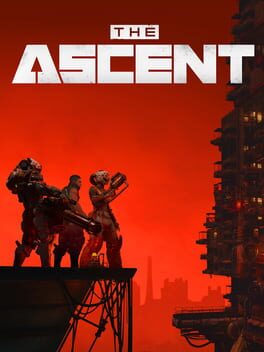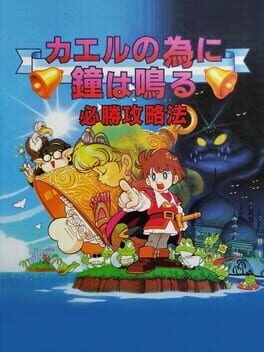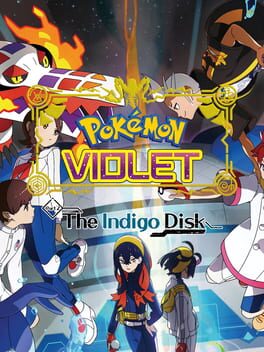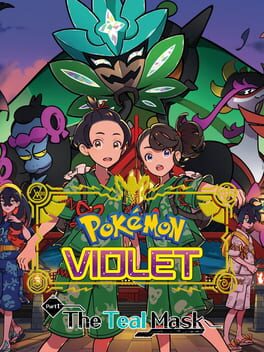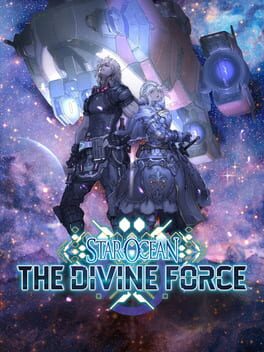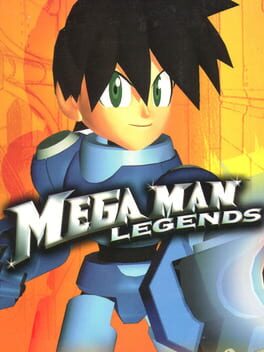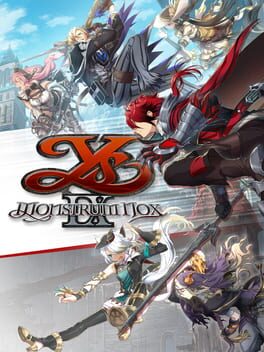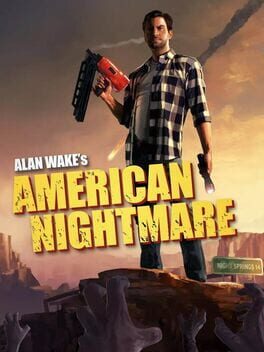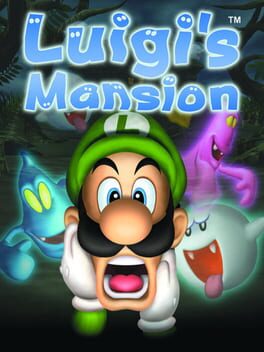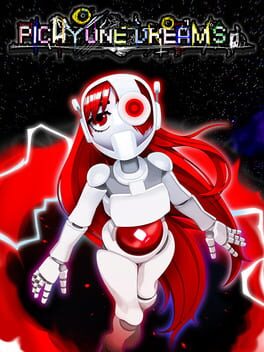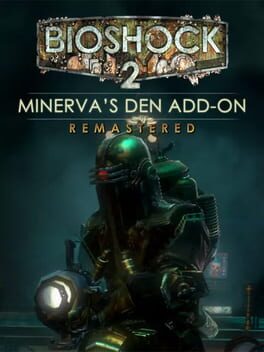2024
When I first played Persona 3 FES in 2020 during covid lockdown, it did not hit especially hard for me. In contrast, my time spent with Persona 3 Reload is something I think I’ll hold dear for many years to come. How can such a 1:1 remake of a game, played only a few years apart leave me with such a different takeaway? I’ve played a lot of remakes, and I’m not sure that this has ever quite happened to me before. Sure, there are some remakes that I prefer to the original, but usually they’re those that make such drastic changes that they feel like a completely different game, but Persona 3 Reload is more or less The Same Game as Persona 3 FES. I think this difference in personal reception is due to a mixture of things. Namely, the exact nature of the changes made in Reload, but also how much I’ve changed as a person in the last 4 years.
Every change here is made with exacting precision in order to maintain the more minimalistic approach to the modern Persona formula that is necessitated by the thematic and narrative needs of Persona 3. Nothing feels like a cynical change made just for the sake of smoothing the edges off for Persona 5 fans, and the game never approaches the maximalist cacophony of mechanics and style of P5. Everything seems to have been done to make Persona 3 Reload feel like its more of itself than any of its previous iterations could have been, and I think the changes allowed me to connect with the narrative on a much deeper level, despite it being largely the same as P3FES in that regard. This feels like one of the most thematically complete games in the genre, both in terms of gameplay and narrative, which is something I’ve come to value much more highly over the years since I played FES.
I’ve touched on this in previous reviews, but the last few years have been a time of rapid change for me. Both in terms of my taste in games, but also life at large. When I first played FES I was just starting to dip my toes into the wider world of JRPGs, coming off of my revelatory experiences with Dragon Quest XI S, and Persona 5 Royal, and the glut of free time I had as a result of being in covid lockdown. This was a time before I had explored the world of Shin Megami Tensei proper, or really understood the appeal of endlessly crawling dungeons, but now that I’ve had all those experiences the previously perceived “rough edges” of P3 have faded into the background for me. The endless slog of Tartarus, though improved in some ways in Reload, now feels like a necessary piece of the puzzle of the story being told, rather than something that’s getting in the way of the daily life stuff I was there for before.
On a more real note, 2020 was obviously an extremely depressing time for me, covid lockdown and the loss of a close friend to suicide exacerbated the crushing loneliness I already experienced due to difficulties with anxiety, and the future seemed utterly hopeless. Reading what I just wrote after finishing Persona 3 for the second time has me realizing that, of course I was not ready for what the game was trying to say at that time, because I was in the midst of living through it. In hindsight, and now being at a better place in my life, conquering my anxiety and having much closer relationships with people than I feel that I was capable of before, it’s obvious how powerful the message of this game is. There were many times while playing that I would relate to something a character was going through via an experience I’ve had in the last 4 years. How could I possibly find Junpei unilaterally annoying as I had in the past when I’ve shared in his experiences in the interim? There’s something that makes me feel a little angry that it took until I was almost 27 years old to find a common ground with a game made with a target audience of teenagers in mind. Why have I not been able to relate to these things before, is something wrong with the way I’ve lived my life? But I think that if Persona 3 has anything to teach the player it’s that there isn’t just one right way to live your life, there’s always going to be experiences you miss out on as you march towards the inevitable end. You just have to make the most of the time you have, and connect with others in the most authentic and vulnerable ways that you’re capable of, and I’m working towards that every day.
Every change here is made with exacting precision in order to maintain the more minimalistic approach to the modern Persona formula that is necessitated by the thematic and narrative needs of Persona 3. Nothing feels like a cynical change made just for the sake of smoothing the edges off for Persona 5 fans, and the game never approaches the maximalist cacophony of mechanics and style of P5. Everything seems to have been done to make Persona 3 Reload feel like its more of itself than any of its previous iterations could have been, and I think the changes allowed me to connect with the narrative on a much deeper level, despite it being largely the same as P3FES in that regard. This feels like one of the most thematically complete games in the genre, both in terms of gameplay and narrative, which is something I’ve come to value much more highly over the years since I played FES.
I’ve touched on this in previous reviews, but the last few years have been a time of rapid change for me. Both in terms of my taste in games, but also life at large. When I first played FES I was just starting to dip my toes into the wider world of JRPGs, coming off of my revelatory experiences with Dragon Quest XI S, and Persona 5 Royal, and the glut of free time I had as a result of being in covid lockdown. This was a time before I had explored the world of Shin Megami Tensei proper, or really understood the appeal of endlessly crawling dungeons, but now that I’ve had all those experiences the previously perceived “rough edges” of P3 have faded into the background for me. The endless slog of Tartarus, though improved in some ways in Reload, now feels like a necessary piece of the puzzle of the story being told, rather than something that’s getting in the way of the daily life stuff I was there for before.
On a more real note, 2020 was obviously an extremely depressing time for me, covid lockdown and the loss of a close friend to suicide exacerbated the crushing loneliness I already experienced due to difficulties with anxiety, and the future seemed utterly hopeless. Reading what I just wrote after finishing Persona 3 for the second time has me realizing that, of course I was not ready for what the game was trying to say at that time, because I was in the midst of living through it. In hindsight, and now being at a better place in my life, conquering my anxiety and having much closer relationships with people than I feel that I was capable of before, it’s obvious how powerful the message of this game is. There were many times while playing that I would relate to something a character was going through via an experience I’ve had in the last 4 years. How could I possibly find Junpei unilaterally annoying as I had in the past when I’ve shared in his experiences in the interim? There’s something that makes me feel a little angry that it took until I was almost 27 years old to find a common ground with a game made with a target audience of teenagers in mind. Why have I not been able to relate to these things before, is something wrong with the way I’ve lived my life? But I think that if Persona 3 has anything to teach the player it’s that there isn’t just one right way to live your life, there’s always going to be experiences you miss out on as you march towards the inevitable end. You just have to make the most of the time you have, and connect with others in the most authentic and vulnerable ways that you’re capable of, and I’m working towards that every day.
This might be the best game in the entire franchise, if not for the fact it has maybe the worst story in the entire franchise. It feels to me like they had a basic idea for what they wanted to do with the game on a thematic level, but then had to contort it to fit it into the new setting, and pad it to hell and back in order to make the game work better as a JRPG with all this incredible side content. Yet, even with all that padding there are several characters that aren't fleshed out in a meaningful way, plot threads that don't get followed up on, both from this game and Gaiden (which was written after IW fwiw), and hardly enough of the mindblowing end-of-chapter cliffhangers that the series is known for to keep me engaged throughout the middle of the game.
All that being said, I still did really really enjoy Infinite Wealth. I don't think I've ever had quite as much fun just hanging out with a JRPG party as I did in this game. The addition of the Bond Bingo system, which adds a ton more conversations for you to get to know every character better, on top of the previously established Drink Link and Table Talk systems made for huge chunks of the game where I was able to just walk around the city and get to know my party members in a supremely deep way. The 2 completely new party members they added are the highlight of Ichiban's half of the game for me too, both of them have satisfying arcs and are just people I would want to hang out with tbh. You also get to see new sides of characters from LAD7 which was delightful, even if most of them get kind of sidelined in the main plot.
The side content here is some of the best in the franchise, and I think a lot of that comes from the combat being legitimately incredible now so it feels less tedious. As much as I loved LAD7, and most of the previous games, combat has never been the strong suit for LAD. It's usually serviceable, and fights end quick so it never distracts you for too long, but in 7 the fights did last too long, which lead to me absolutely dreading any sort of encounter pretty quickly. I won't say that the combat in Infinite Wealth really goes any quicker than in the previous game, though due to all the additions they made to the mechanics it's far more engaging than before, which makes me not feel that length at all. I was legitimately seeking out fights, for maybe the first time in the entire series, which is a hell of an accomplishment. Like I said, this makes the already top-tier side content even better, because now when I'm running from place to place for a substory, I actually like getting in a random encounter, and for the bits of side content that are entirely focused on the combat (dungeons, part-time hero) I'm also all-in in a way I've never been. The big side quest for Kiryu, the bucket list, not only reminded me of all the older games in a way that made me want to replay literally all of them, but also had more moments that made me shed a tear than the main story did, by a lot.
In a similar vein to LAD5, I do like this big messy overambitious game a lot, but I hope that this isn't the direction the franchise is going to take overall. At least not at the expense of the more intimate, dense, and tighter games that made me fall in love with Like a Dragon.
All that being said, I still did really really enjoy Infinite Wealth. I don't think I've ever had quite as much fun just hanging out with a JRPG party as I did in this game. The addition of the Bond Bingo system, which adds a ton more conversations for you to get to know every character better, on top of the previously established Drink Link and Table Talk systems made for huge chunks of the game where I was able to just walk around the city and get to know my party members in a supremely deep way. The 2 completely new party members they added are the highlight of Ichiban's half of the game for me too, both of them have satisfying arcs and are just people I would want to hang out with tbh. You also get to see new sides of characters from LAD7 which was delightful, even if most of them get kind of sidelined in the main plot.
The side content here is some of the best in the franchise, and I think a lot of that comes from the combat being legitimately incredible now so it feels less tedious. As much as I loved LAD7, and most of the previous games, combat has never been the strong suit for LAD. It's usually serviceable, and fights end quick so it never distracts you for too long, but in 7 the fights did last too long, which lead to me absolutely dreading any sort of encounter pretty quickly. I won't say that the combat in Infinite Wealth really goes any quicker than in the previous game, though due to all the additions they made to the mechanics it's far more engaging than before, which makes me not feel that length at all. I was legitimately seeking out fights, for maybe the first time in the entire series, which is a hell of an accomplishment. Like I said, this makes the already top-tier side content even better, because now when I'm running from place to place for a substory, I actually like getting in a random encounter, and for the bits of side content that are entirely focused on the combat (dungeons, part-time hero) I'm also all-in in a way I've never been. The big side quest for Kiryu, the bucket list, not only reminded me of all the older games in a way that made me want to replay literally all of them, but also had more moments that made me shed a tear than the main story did, by a lot.
In a similar vein to LAD5, I do like this big messy overambitious game a lot, but I hope that this isn't the direction the franchise is going to take overall. At least not at the expense of the more intimate, dense, and tighter games that made me fall in love with Like a Dragon.
2021
I love the look of this game so much. This is the exact type of gritty disgusting vile cyberpunk that I love to gawk at while my face is bathed in an unholy red light. It has shades of all the popular cyberpunk fiction, but also Tsutomu Nihei’s Blame! which is one of my favorite manga period. There’s echoes in here of a lot of the aesthetic trappings that really captivated me with Signalis, but just done in a more contemporary style with Bigger Money.
That’s kind of where my adoration for The Ascent begins and ends though. I don’t usually ding games for technical issues, because modern video games are so complex that it’s a miracle that any of them ever come out completely bereft of this sort of thing. That being said, this game, which is an ostensibly co-op shooter, has completely broken co-op. In the 6 or 7 hours I played with a friend we had the game crash one of our systems, freeze up completely about every 30 minutes, and make us unable to shoot our weapons in combat several times over. All in all it felt like I was spending more time rebooting the game than actually playing it. Apparently most of these issues are not present at all in the single player, but the entire appeal to me is the co-op element so this just stopped me dead in my tracks.
It would be one thing if the gameplay was absolutely stellar, maybe I’d suffer through these issues or just play by myself, but it’s a pretty bog standard action-rpg. There’s a mechanic for raising and lowering your weapon, which is neat in an isometric space, but in my time with the game I found very little reason to actually utilize that. There’s also surprisingly little interesting loot for a game of this type, the friend I was playing with and I just ended up on almost the exact same build because it didn’t ever seem worth branching out. Just nothing really fired any neurons for me, it’s the type of thing that’s frictionless enough I would probably just see it through to the end and forget about entirely if I had been allowed that luxury.
That’s kind of where my adoration for The Ascent begins and ends though. I don’t usually ding games for technical issues, because modern video games are so complex that it’s a miracle that any of them ever come out completely bereft of this sort of thing. That being said, this game, which is an ostensibly co-op shooter, has completely broken co-op. In the 6 or 7 hours I played with a friend we had the game crash one of our systems, freeze up completely about every 30 minutes, and make us unable to shoot our weapons in combat several times over. All in all it felt like I was spending more time rebooting the game than actually playing it. Apparently most of these issues are not present at all in the single player, but the entire appeal to me is the co-op element so this just stopped me dead in my tracks.
It would be one thing if the gameplay was absolutely stellar, maybe I’d suffer through these issues or just play by myself, but it’s a pretty bog standard action-rpg. There’s a mechanic for raising and lowering your weapon, which is neat in an isometric space, but in my time with the game I found very little reason to actually utilize that. There’s also surprisingly little interesting loot for a game of this type, the friend I was playing with and I just ended up on almost the exact same build because it didn’t ever seem worth branching out. Just nothing really fired any neurons for me, it’s the type of thing that’s frictionless enough I would probably just see it through to the end and forget about entirely if I had been allowed that luxury.
Link's Awakening has long been one of my favorite Zelda games, and the uncontested peak of the Gameboy's library. For the Frog the Bell Tolls is its direct predecessor, both in the tech used and in much of the tone and personality that lies at the core appeal of both games. Threaded throughout this game you can feel the bones of the trading quest in Link's Awakening especially strongly, which is one of the best bits that game has to offer. The princely protagonist here is on a wild goose chase being strung along from favor to favor in order to get back his squandered wealth and save the day.
All the major characters have really strong personalities and go through their own little arcs in ways that I just would not expect from a game of this age on the platform its on. From your spoiled rich kid protagonist, to the thief that plunders that wealth, everyone gets a little more care put into them than you might expect. Punching above its weight is something this game does consistently, from the writing to the game design at its core. For a puzzle-heavy adventure game like this to have such smooth progression is miraculous. I only felt stumped in a couple of instances where I didn't exhaust everyone's dialogue, and I was consistently impressed by the creativity behind the solutions to the myriad of puzzles even with such a limited arsenal at your disposal. In particular, the culmination of your quest for gold had me damn near clapping at the screen when I figured out what I was supposed to do. This is all without even mentioning the way that the overworld and the dungeons seemlessly work together to utilize your toolset in unique ways.
Really the only thing dragging down For the Frog the Bell Tolls for me is that sometimes the overly punitive action gets in the way of the joy of puzzle solving. There are just times where you miss a platform and fall into an instant death pit, or you accidentally run into an enemy you have no hope of defeating and the escape command fails 5 times in a row with no recourse. It just feels really frustrating to get sent back to town, having to redo an entire dungeon just because of one little mistake, in a game where the emphasis is not at all on the action. I do appreciate how the combat system is handled more broadly, it's used more to gate you out of areas you're not supposed to be in yet and funnel you in the right direction which is neat, but in dungeons it can be a bit too much.
Overall this is a really really charming game, and without a doubt one of the best in the Gameboy library. It's always a treat to see the lineage behind games you love too, I feel like this experience only enriches my love of Link's Awakening even more.
All the major characters have really strong personalities and go through their own little arcs in ways that I just would not expect from a game of this age on the platform its on. From your spoiled rich kid protagonist, to the thief that plunders that wealth, everyone gets a little more care put into them than you might expect. Punching above its weight is something this game does consistently, from the writing to the game design at its core. For a puzzle-heavy adventure game like this to have such smooth progression is miraculous. I only felt stumped in a couple of instances where I didn't exhaust everyone's dialogue, and I was consistently impressed by the creativity behind the solutions to the myriad of puzzles even with such a limited arsenal at your disposal. In particular, the culmination of your quest for gold had me damn near clapping at the screen when I figured out what I was supposed to do. This is all without even mentioning the way that the overworld and the dungeons seemlessly work together to utilize your toolset in unique ways.
Really the only thing dragging down For the Frog the Bell Tolls for me is that sometimes the overly punitive action gets in the way of the joy of puzzle solving. There are just times where you miss a platform and fall into an instant death pit, or you accidentally run into an enemy you have no hope of defeating and the escape command fails 5 times in a row with no recourse. It just feels really frustrating to get sent back to town, having to redo an entire dungeon just because of one little mistake, in a game where the emphasis is not at all on the action. I do appreciate how the combat system is handled more broadly, it's used more to gate you out of areas you're not supposed to be in yet and funnel you in the right direction which is neat, but in dungeons it can be a bit too much.
Overall this is a really really charming game, and without a doubt one of the best in the Gameboy library. It's always a treat to see the lineage behind games you love too, I feel like this experience only enriches my love of Link's Awakening even more.
I reviewed the two DLCs separately, but I just wanted to touch on the epilogue here since that doesn't have its own Backloggd page. I loved the epilogue. It's the exact kind of story I'd love to see more of in Pokemon going forward. It's a silly little episodic adventure, centering around a Pokemon's particular abilities, where you and your friends get swept up and have to figure out a solution. It builds on the friendships you forged with the cast throughout the base game and the DLCs, and lets you see where all these characters are after their arcs are concluded. There's absolutely nothing like this in the entire franchise, and whereas I don't think it's anything super spectacular in a vacuum, it's super spectacular by Pokemon standards specifically, and it's got me feeling better about this series than I have in a long time.
The Indigo Disk once again impressed me with an interesting take on a small open world. A giant terrarium split cleanly into four slices, each a different biome with wildly different terrain, leading to a ton of variety packed into a pretty small area, which is also dotted with tunnel systems that are complex enough that I don't think I came close to seeing all of it. All the callbacks to the Unova and Alola games through locales, characters, and music were all very appreciated as someone who is a huge mark for those regions. The focus on double battles here is fantastic, it takes the high-level postgame balance I loved about the previous DLC and pumps it up even higher, leading to even more encounters where I almost didn't make it out alive despite my playthrough-mons being near max level at this point. Story wise I definitely do think this one is a bit worse than its predecessor, it just feels much less focused and I'm not positive that I like what they did with Kieran's arc. I will say that I did really enjoy the ending, there's a couple of great subversions of series-wide tropes, and a phenomenal boss fight to cap it all off.
It’s interesting to see Gamefreak’s ability at crafting little open worlds evolve so quickly as they rapidly iterate and release new content so quickly. This is one of the best of these worlds yet, designed as a wheel with a tall, dense mountain in the middle and several biomes as the spokes, each with containing one of the “Six Wonders of Kitakami” which hilariously range from a circle of rocks to an unremarkable pond. The Kitakami region also contains elements pulling from the aesthetics of the Japanese inaka, reminiscent of aspects of Hisui and Johto in quite a few ways that I found delightful as a fan of those regions specifically.
The fact this is meant to be played in the post game, where players have Pokémon in the level 50+ range leads to a flattened level curve which allows you to go anywhere in the world and have a roughly equivalent experience, with a handful of trainer battles and actually putting me on the back foot and making me use items to stay alive, even in instances where my party outleveled the opponents by quite a bit.
The story also impresses by Pokémon standards, drawing parallels from the ancient regional myth of Ogrepon and the contemporary problems of the loner adolescent Kieran. It’s not deep by any means but it navigates its themes in a way that I just don’t expect from this series anymore. I think it fumbles the bag a little bit at the end, with a scene featuring Kieran that made me lose it laughing, and a cliffhanger for the second DLC that makes this end on an abrupt note.
The fact this is meant to be played in the post game, where players have Pokémon in the level 50+ range leads to a flattened level curve which allows you to go anywhere in the world and have a roughly equivalent experience, with a handful of trainer battles and actually putting me on the back foot and making me use items to stay alive, even in instances where my party outleveled the opponents by quite a bit.
The story also impresses by Pokémon standards, drawing parallels from the ancient regional myth of Ogrepon and the contemporary problems of the loner adolescent Kieran. It’s not deep by any means but it navigates its themes in a way that I just don’t expect from this series anymore. I think it fumbles the bag a little bit at the end, with a scene featuring Kieran that made me lose it laughing, and a cliffhanger for the second DLC that makes this end on an abrupt note.
I've seen a lot of people compare this directly to Symphony of the Night, and that's fair, it is the next Big Boy console release in the franchise after that game, and when looking at them next to each other it's plain to see where Lament of Innocence lacks lamentably. It's apparent to me though that this is a followup to Circle of the Moon more than anything. Both are attempts at bringing the metroivania style of vania to new console paradigms, and both adopt a bit of a back to basics approach to the aesthetics of the franchise. But whereas Circle of the Moon's dedication to that basic look made the game turn into complete visual mush, the 6th gen 3D look of LoI is beautiful. This is just a phenomenal looking game with so much atmosphere. Each area of the castle has its own distinct look, but they're all drenched in fog and claustrophobic due to the fixed camera angles, and that combined with the immaculate soundtrack makes for a game that I just love walking around in. Yes, the actual layout of the castle is very uninteresting and many, many rooms are repeated over and over with minor variations, but occupying this castle puts me in such a particular state of mind that I just don't care that the rest of the game is pretty mid. The one non-aesthetic thing that really activated my monkey brain was the Orb system. Much like the DSS system from CotM you get to mix and match orbs that drop from bosses with the traditional array of Castlevania items, which leads to all sorts of ridiculous attacks that clear rooms of enemies in a snap. It's definitely not as deep as the DSS, but you get so many stupid animations that it evens out.
1997
Presentationally exquisite in ways that I can only assume influenced just about every AAA game I can think of, at least in small ways. Exploring the island and finding new items to mess around with, and using those same items to push deeper into the maze of ruins under the island was consistently enjoyable. Something about the way this game is structured makes it feel so much bigger than it actually is, there’s a real sense of being in a gigantic labyrinthine world when in reality it’s like, a handful of small maps interconnected in clever ways. It seems crazy to me that this came out a year before Ocarina of Time, because there’s so many things it does that seem to be in conversation with that game, but it’s definitely just a case of multiple discovery.
2019
For me, Ys VIII felt like it finally justified this entire era of Ys, delivering an action combat system that was equal parts arcadey and deep, while also telling a story with a strong emotional core with an interesting structure. Ys IX takes that formula and refines it. Compacting what worked about that sprawling adventure down into a much more dense game.
I absolutely adore the setting - a prison city dotted with dungeons and emphasizing verticality, which constantly urges you to use all your new-found movement abilities to their utmost. The density of the city aides in the storytelling as well, allowing for tons of characters to briefly cross your path, only to turn up again later in unexpected places, which even plays into a major twist late in the game that made me cackle because it was so out of left field. I just developed such a deep sense of familiarity with the world and characters here, which I cannot say I experience often to this degree. It felt genuinely painful to say goodbye to the cast, despite so many of them being the anime tropes the series has leaned on for so long, the interconnectedness of their lives with the city and Adol just hit on something deep for me that I can't quite explain.
The mechanical framework that Ys VIII established remains mostly intact here as well, the combat flows largely the same, but due to a couple things I enjoyed it substantially more this time around. First of all, I played on hard, which was somehow a first for me across the entire franchise, and this forced me to use flash guard way more often than I had previously. This led me to realize that it's one of the most satisfying fucking mechanics I have ever experienced in any action game, stringing that together back to back to completely block all damage and build meter to spam a bunch of moves is just the best feeling in the world dude. I also found the movesets of the characters to work a lot better for me than in the last few games. It feels like every move has its niche, there are certainly moves that are better than others, but they're locked deep into the game for the most part, and with the way SP costs are balanced you still have to make some tough decisions about what loadout to use. I also found myself considering what accessories to equip much more frequently than before, because so many of them provide unique utilities that have interesting implications for your build. I really just had a ball from front to back with the combat here, I think they pushed this system to its absolute limits considering this was its final outing if what I understand of Ys X is accurate.
If I had one gripe it's that the game seems to have a very centrist, bordering on pro-imperialism message which kinda sucks. I would say it's in line with the series' depiction of Romn up to this point, but considering the last couple of entries try to have a more mature narrative I would expect something a little bit more nuanced at this point. If we can have a plot with as much mechanical complexity as this game has, they could certainly tackle these subjects in a better way than "some imperialists are okay." That sucks!
I absolutely adore the setting - a prison city dotted with dungeons and emphasizing verticality, which constantly urges you to use all your new-found movement abilities to their utmost. The density of the city aides in the storytelling as well, allowing for tons of characters to briefly cross your path, only to turn up again later in unexpected places, which even plays into a major twist late in the game that made me cackle because it was so out of left field. I just developed such a deep sense of familiarity with the world and characters here, which I cannot say I experience often to this degree. It felt genuinely painful to say goodbye to the cast, despite so many of them being the anime tropes the series has leaned on for so long, the interconnectedness of their lives with the city and Adol just hit on something deep for me that I can't quite explain.
The mechanical framework that Ys VIII established remains mostly intact here as well, the combat flows largely the same, but due to a couple things I enjoyed it substantially more this time around. First of all, I played on hard, which was somehow a first for me across the entire franchise, and this forced me to use flash guard way more often than I had previously. This led me to realize that it's one of the most satisfying fucking mechanics I have ever experienced in any action game, stringing that together back to back to completely block all damage and build meter to spam a bunch of moves is just the best feeling in the world dude. I also found the movesets of the characters to work a lot better for me than in the last few games. It feels like every move has its niche, there are certainly moves that are better than others, but they're locked deep into the game for the most part, and with the way SP costs are balanced you still have to make some tough decisions about what loadout to use. I also found myself considering what accessories to equip much more frequently than before, because so many of them provide unique utilities that have interesting implications for your build. I really just had a ball from front to back with the combat here, I think they pushed this system to its absolute limits considering this was its final outing if what I understand of Ys X is accurate.
If I had one gripe it's that the game seems to have a very centrist, bordering on pro-imperialism message which kinda sucks. I would say it's in line with the series' depiction of Romn up to this point, but considering the last couple of entries try to have a more mature narrative I would expect something a little bit more nuanced at this point. If we can have a plot with as much mechanical complexity as this game has, they could certainly tackle these subjects in a better way than "some imperialists are okay." That sucks!
American Nightmare makes the core gameplay of Alan Wake actually tolerable, and builds upon the world of the original game in a couple of cool ways. That being said, at its core, it's still Alan Wake. It's a third person shooter that doesn't feel quite up to snuff even considering many of its contemporaries weren't that great, and it tries to lean into these pulp horror elements without ever hitting on anything super new or novel. I think this one definitely suffers from the shift in setting too, because the sparse desert never really lives up to the dense forests of its predecessor, either for the purposes of horror, encounter design, or just aesthetics.
2001
I just adore the plethora of spooky little dioramas on display here, each just as charming as the last, filled with colorful characters that fit into the Mario aesthetic while still being new and interesting, and puzzles that take advantage of everything you could possibly do with the simple vacuum & flashlight mechanics. There's just so much personality on display here, and the fact it's a shorter, tighter interconnected world than its successors really makes it work for me.
2023
The genre fusions that Picayune Dreams offers are interesting enough in and of themselves, switching back and forth between bullet heaven, bullet hell, and RPG Maker horror game, but the real feat is how sublimely these all mesh together without the seams really showing. Of course bullet heaven and hell are sister genres, the only meaningful difference being who has the upper hand, but to splash these intense boss fights in the middle of mindlessly shooting down waves of drones without introducing any major pain points is impressive. The push and pull put me even further into the meditative state typically associated with bullet heavens, storing up my resources both, in game and mentally, to prepare for the next boss encounter. The reward for beating a boss for the first time being another genre switch that allows you to slow down massively and just learn more about the setting makes taking them down all the more satisfying. The overall presentation is extraordinarily effective too, I especially adore the UI which is so player-hostile with the way it presents item information to you, that it works in perfect ludonarrative harmony with our character not having all the pieces either. Really just an insane game all around and the only breath of fresh air I’ve seen injected into bullet heavens which seem to have stagnated just as quickly as they arrived.
The narrative twist of Minerva's Den works because it's a perfect punctuative knife twist at the tail end of a narrative that draws you in emotionally from the very beginning. This is a far more intimate story than I ever thought Bioshock as a franchise would be capable of, and that working in tandem with the claustrophobic, even by this franchise's standards, environments sets a singular mood. I found the design of the new levels to be engaging in a way even more compelling than the base game, requiring me to, at least on hard, scrape every inch of the environment looking for an advantage and use my entire toolbox more-so than had ever been demanded of me before. The short length not only helps to establish the feeling of intimacy, but also allows for a rapid-fire pacing of meaningful gameplay shakeups to keep things interesting throughout. Handily the best piece of Bioshock media, and that's by about 30000 leagues.


